In the history of architecture, few figures remain as provocatively relevant as Frank Lloyd Wright. Born June 8, 1867, Wright’s legacy is not preserved in nostalgia or stylistic pastiche, but in ideas that continue to challenge, inspire, and disrupt architectural norms.
At a moment when the discipline grapples with environmental collapse, housing crises, and alienation through hyper-industrialized design.
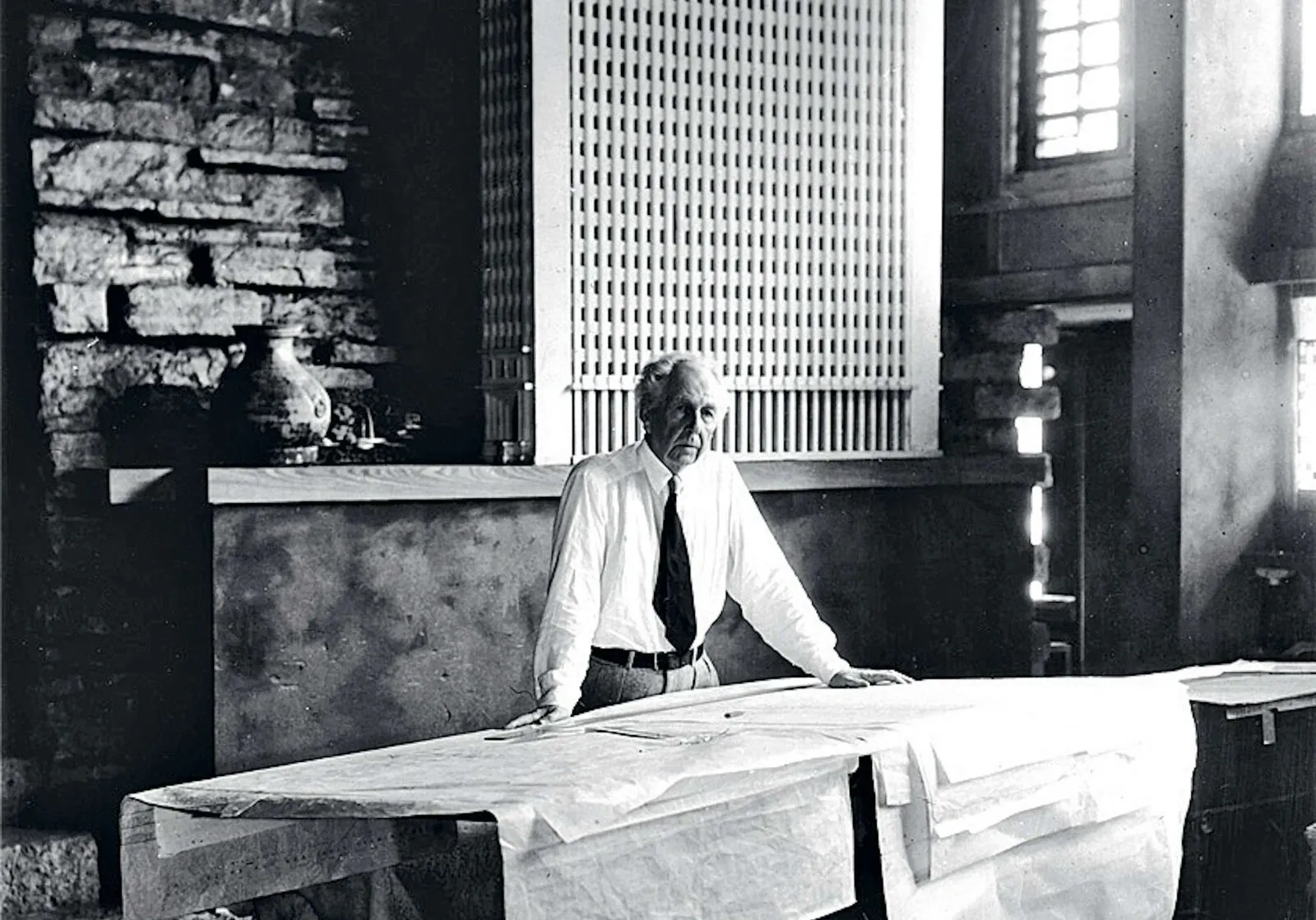
Organic Architecture as Method, Not Metaphor
Too often reduced to visual tropes, horizontal lines, cantilevers, and open plans, Wright’s concept of organic architecture was fundamentally systemic. It was about blending into nature and designing from within a site’s logic.
Fallingwater, completed in 1939, is a residence that seamlessly blends with its natural setting, built over a waterfall in Pennsylvania. The house sits near the waterfall; it physically integrates with it, extending over it in daring cantilevers that fuse engineering. Horizontal planes stretch outward like strata, echoing the sandstone ledges beneath.
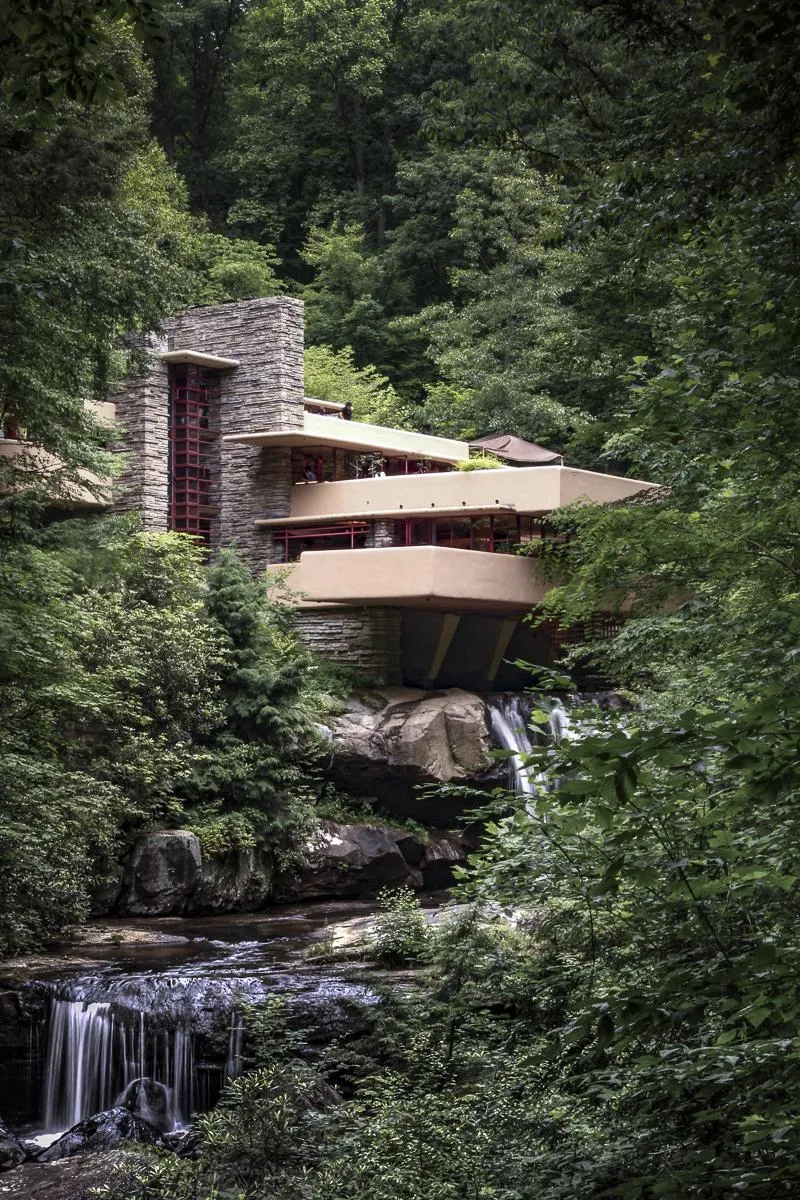
The hearth, central to Wright’s residential planning, anchors the plan atop a boulder embedded into the living room floor. The site becomes inseparable from the architecture’s spatial vocabulary.
Site, Space, and Sequence
Wright’s command of spatial sequence, which he called “compression and release,” was both compositional and psychological. Visitors to his spaces are never handed a static visual frame; they are led, turned, narrowed, then suddenly expanded into light. His foyers are famously compressed, sometimes uncomfortably so, because they heighten the drama of entering the main space.
The Frederick C. Robie House (1910), Chicago, Illinois, is a masterclass in spatial progression. The visitor’s path from street to entry is indirect, veiled by overhangs and masonry screens, amplifying a sense of arrival. The main living space sits elevated, and the approach ramps one’s sense of anticipation, Wright’s classic compression and release in action. Inside, the space flows laterally across the open plan, reinforced by long bands of art glass windows and floating ceiling planes.

For architects, this remains a vital lesson: form must do more than express; it must guide, provoke, and participate in lived experience.
The Usonian Model and the Politics of Form
Beyond aesthetic or experiential values, Wright’s architecture carried socio-political implications. His Usonian homes, designed from the 1930s onward, represent his clearest argument for democratic design. These were modest, single-story homes built on concrete slabs, with radiant heating, open interiors, and minimal ornament.
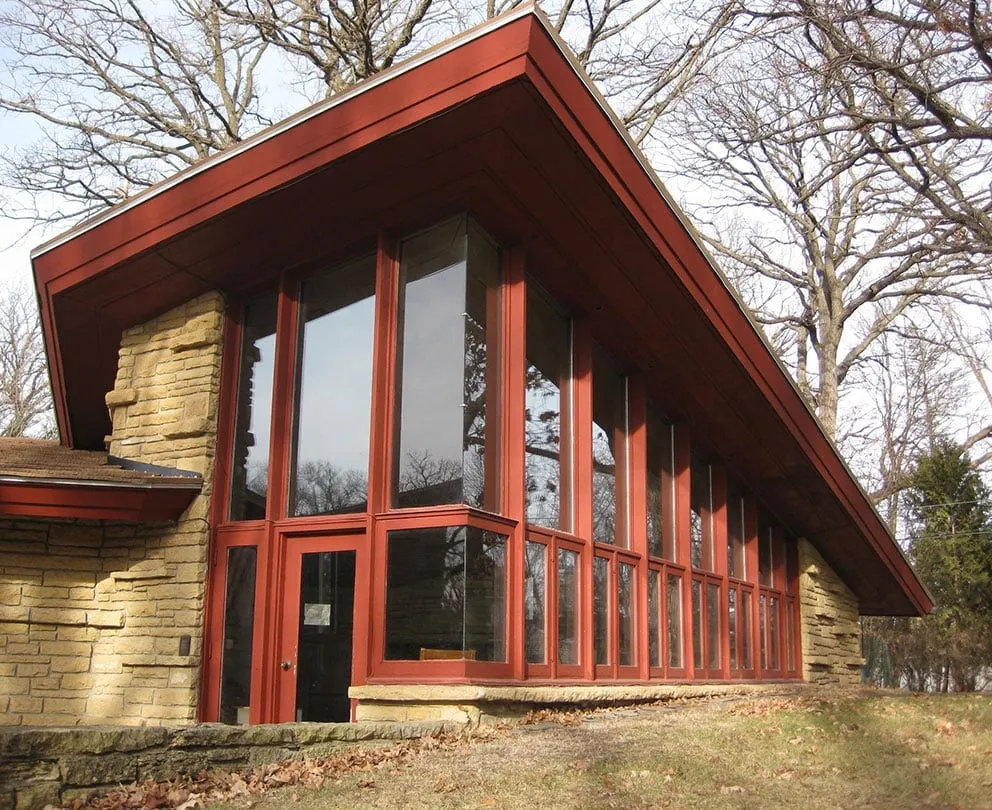
Every Usonian house was site-specific. Each drew light and heat based on orientation, featured built-ins to reduce clutter, and used local materials to stay rooted. Wright envisioned these homes as models for the American middle class, an architecture of dignity without excess, and individuality without indulgence.
They offer a compelling framework even today, especially as architecture seeks to reconcile sustainability, affordability, and identity.
Materials, Tectonics, and Innovation
Wright’s material palette was never arbitrary. Wood, brick, concrete, stone, glass—each was chosen for performance and character. He believed materials had moral weight. His use of precast concrete blocks in the textile block houses of the 1920s, for instance, attempted to create a modular, scalable system that still felt crafted.
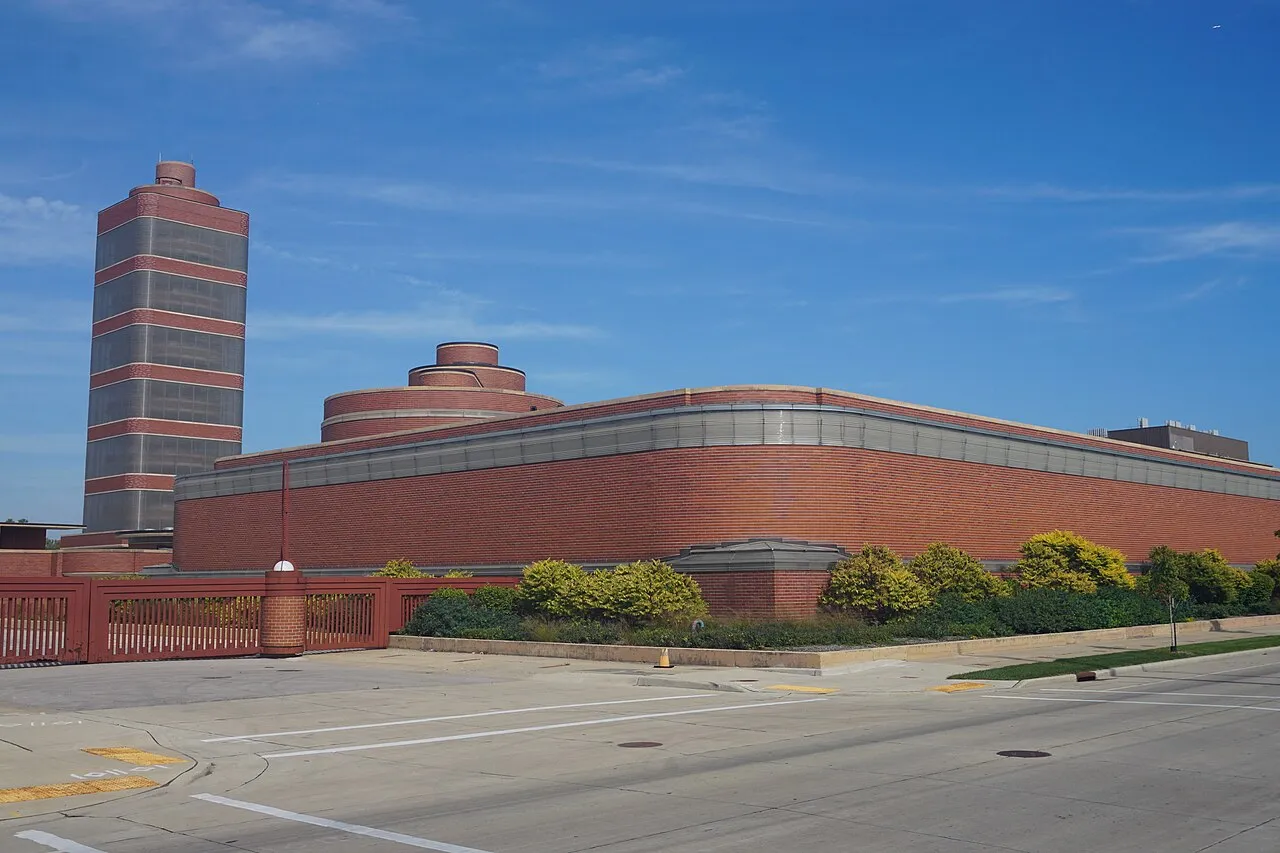
In his Johnson Wax Headquarters (1939), he developed dendriform columns that expand like lily pads, defying both structural convention and aesthetic expectation. He engineered solutions to spatial problems, and in doing so, stretched architecture’s technical and expressive limits.
Wright’s fierce belief in the individual extended beyond his clients and users. He saw the architect as a visionary, a shaper of society, & the market.

Wright’s failures – his authoritarian control over projects, his personal excesses, his complicated legacy with apprentices are not footnotes. They are reminders that architecture, like any cultural practice, carries the complexities of its maker.
And yet, those who studied under him at Taliesin, many of whom became formidable architects in their own right, speak to the enduring value of his experimental, immersive pedagogy.
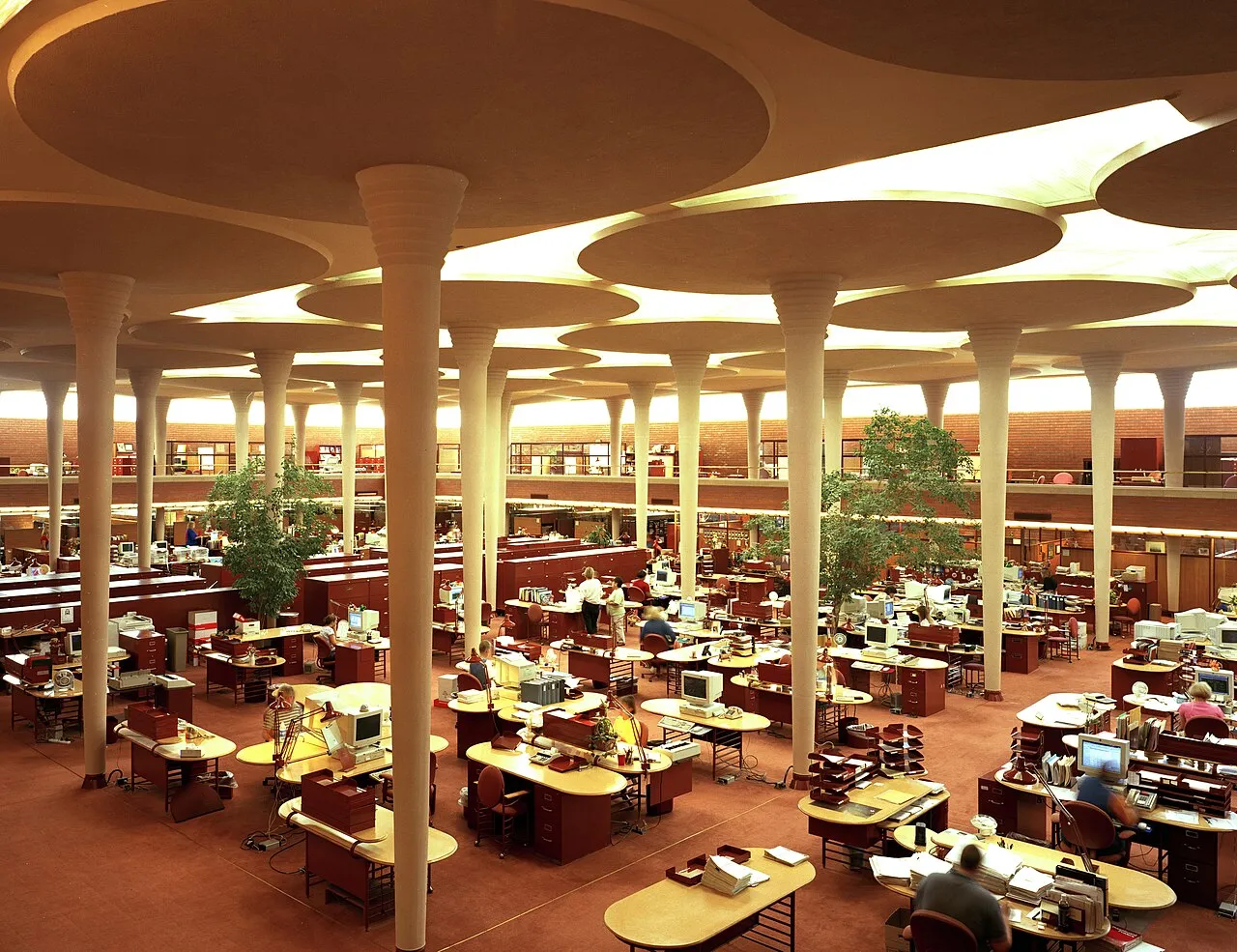
Lessons for the Contemporary Practitioner
For architects working today, Wright’s silhouettes, motifs, or materials can be adopted, but without the underlying discipline, they risk becoming caricatures.
The deeper inheritance lies in his rigor:
- His unwavering site specificity: a response to topography, solar orientation, prevailing winds, and material availability.
- His treatment of clients as co-creators, not consumers: Wright’s interviews with clients often extended into detailed lifestyle studies, resulting in plans that reflected behavioral patterns, circulation preferences, and even acoustic sensitivities.
- His understanding of space as a temporal and tactile art: use of interlocking volumes, differentiated ceiling heights, and axis-bending geometries controlled sight & motion.
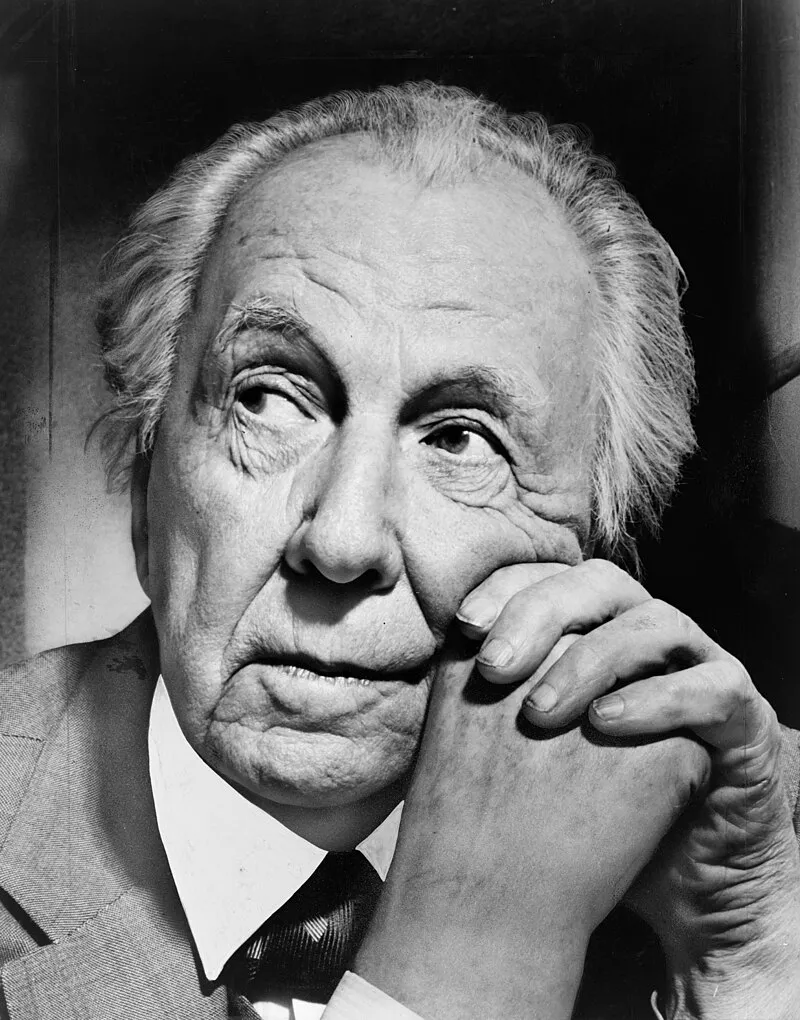
Wright’s contributions were recognized with numerous awards, including being named “the greatest American architect of all time” by the American Institute of Architects in 1991. His works have been designated as UNESCO World Heritage Sites, underscoring their global significance and importance.




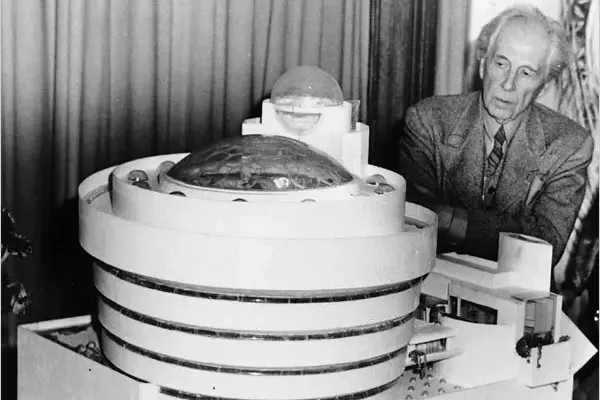



















Leave a comment